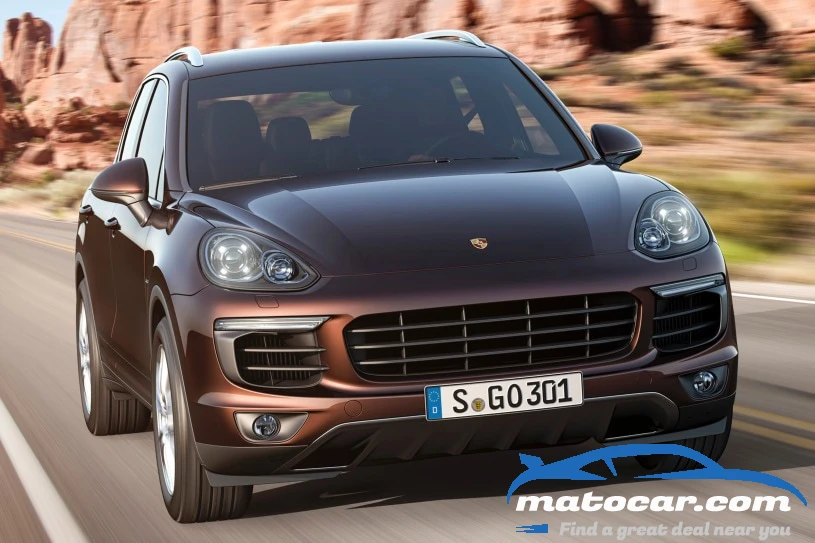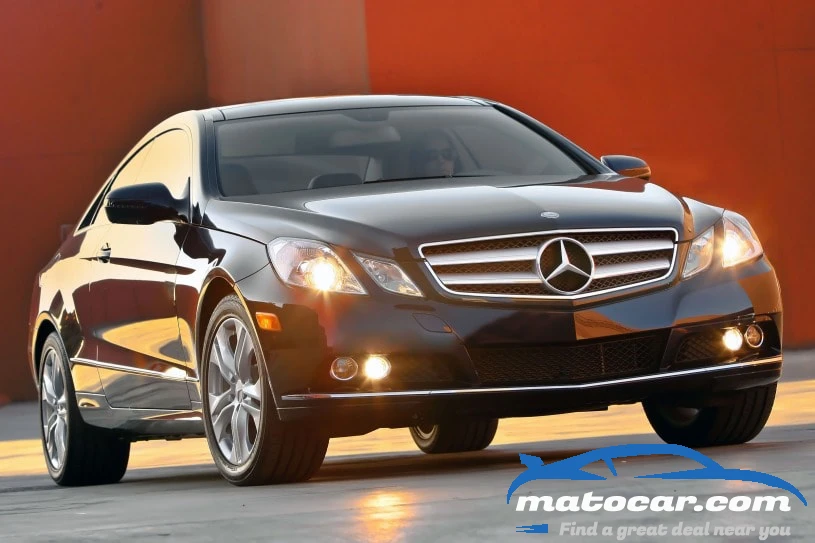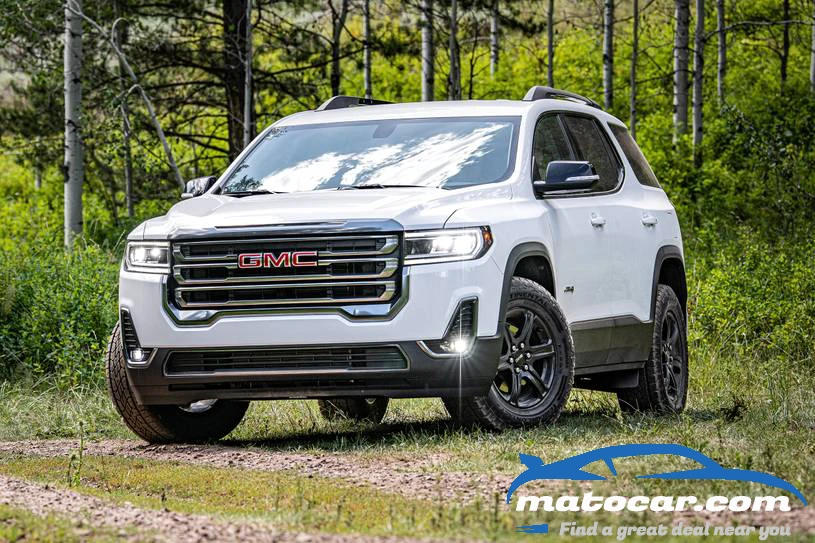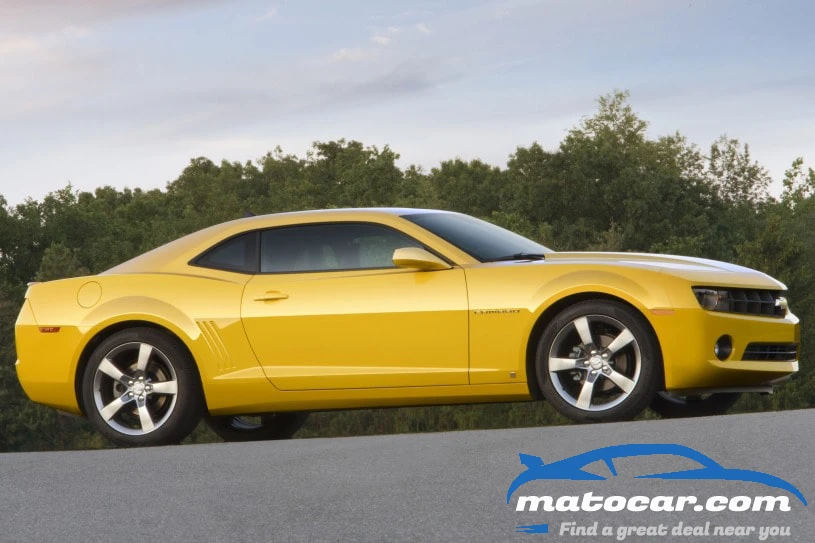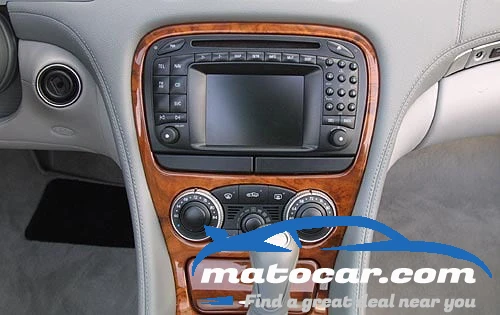Porsche Cayenne 2015 Review Prices , and Pictures
10.0/10
Based on 1 reviewsMSRP range: $32,323 - $40,114
- Rewarding handling
- efficient diesel engine
- innovative plug-in hybrid model
- ultrafast Turbo trim
- exquisite interior
- highly customizable.
- Limited cargo capacity
- relatively small touchscreen.
The 2015 Porsche Cayenne is at once sporty and sumptuous, and its comprehensive lineup includes a diesel-powered model and a plug-in hybrid. It might be the best all-around crossover on the market.
Vehicle overview
For a minute there, it looked as if the 2015 Porsche Cayenne might get lost in the shuffle. With the debut of the compact Porsche Macan crossover SUV earlier this year, the Cayenne suddenly wasn't the hottest SUV under Porsche's roof. But it seems the Cayenne's designers couldn't just stand idly by while the pipsqueak got all the press. Accordingly, the 2015 Cayenne gets a host of upgrades aimed at reinvigorating its flagship status.
Engine offerings are a telltale sign of where a vehicle falls in the Porsche pecking order, and the 2015 Cayenne is clearly on top from this vantage point. Although the fuel-efficient diesel engines soldier on, the popular Cayenne S takes a step forward in terms of both performance and fuel economy. Instead of having a V8 like it did in prior years, it how has a turbocharged V6 (it's also used in the upgrade Macan Turbo). Compared to the old V8, it produces more power and torque, yet returns better fuel economy. The Cayenne Turbo keeps its V8, but it boasts 20 extra horsepower and 37 more pound-feet of torque this year. The more performance-tuned Turbo S and GTS trims take a model year off. They will return for 2016 along with the base model.
The new S E-Hybrid, meanwhile, is a story in itself, bursting on the scene this year as the first plug-in hybrid in the segment (and sending the previous S Hybrid packing). It allows about 14 miles of all-electric propulsion, which isn't a lot, but it's beneficial on short commutes, and the enlarged plug-in battery pack provides more energy to supplement the gasoline engine. This not only improves overall fuel economy, but allows for acceleration that rivals that of the regular Cayenne S.
There are also numerous exterior changes to keep the Cayenne looking fresh alongside its fashion-forward younger sibling, including new front and rear fascias, redesigned LED taillights and available LED headlights. With all the changes afoot for 2015, our consequential complaints about the Cayenne have dwindled to a single kvetch: There's still not much cargo space given the vehicle's significant size. That's one way in which the Cayenne would be expected to set itself apart from the Macan, but it's just not happening as long as the current body style sticks around.
As such, we'd recommend checking out the Macan as well as the Cayenne. As for other options, the 2015 Land Rover Range Rover Sport is certainly a worthy alternative, offering a third-row seat for the kids and a new SVR model with some serious performance credentials. The 2015 BMW X5 is pretty athletic as well, with a vestigial third-row seat of its own, and it more or less matches the Cayenne engine for engine, lacking only a hybrid model. Although the 2015 Mercedes-Benz M-Class doesn't like to dance around turns as much as the Porsche, it runs down the straightaways like a freight train, and its ride might be the smoothest in this class. But if you want the best all-around performance crossover SUV for the price -- or any price, really -- the 2015 Porsche Cayenne earns our recommendation.
2015 Porsche Cayenne models
The 2015 Porsche Cayenne is a five-passenger midsize SUV available in four trim levels: Diesel, S, S E-Hybrid and Turbo.
The Diesel starts with 18-inch alloy wheels, xenon headlights, LED running lights and taillights, automatic wipers, heated mirrors, a power tailgate, rear privacy glass, dual-zone automatic climate control, eight-way power front seats, partial leather upholstery, a heated steering wheel, a cooled glovebox, a manually sliding and reclining rear seat, 40/20/40-split-folding rear seatbacks, a 7-inch central touchscreen, a navigation system, Bluetooth phone and audio connectivity and a 10-speaker audio system with a USB interface and HD radio.
The Cayenne S is similar but is powered by a turbocharged V6 gasoline engine and also has 19-inch wheels, speed-sensitive variable steering effort ("Power Steering Plus"), a sunroof, front and rear parking sensors and driver memory settings.
The S E-Hybrid comes with a plug-in hybrid power system, adaptive suspension dampers, Porsche Car Connect with E-mobility (providing remote access to important hybrid features via a smartphone app), a 3.6-kilowatt onboard charger (a 7.2 kW charger is available) and an energy management display in the instrument cluster.
Going with the Turbo gets you the most powerful engine available, as well as adaptive LED headlights, LED running lights and foglights, an adjustable air suspension, a simulated suede roof liner, a full leather interior, 18-way adaptive sport seats, rear outboard sport seats and a 14-speaker Bose surround-sound audio system with satellite radio and HD radio.
The Cayenne's dizzying options list starts with three main packages. The Infotainment package, offered on all but the Turbo, adds the Bose stereo, satellite radio and integrated "online services" (including the Aha smartphone app with on-demand music, Internet radio, Facebook and Twitter feeds, traffic and weather reports and Google POI search).
The Premium package adds (where not already specified) Power Steering Plus, extended LED accent lighting, adaptive bi-xenon headlights, auto-dimming mirrors, front and rear parking sensors, a rearview camera and 14-way power heated and ventilated front seats with memory functions. The Diesel's version of this package includes the sunroof, while the S, S E-Hybrid and Turbo get a panoramic sunroof (optional on Diesel).
Finally, the Premium Package Plus includes the Premium package and adds (where not already specified) adaptive LED headlights, keyless entry and ignition, heated rear seats, power rear window sunshades and a blind-spot monitor (upgradable to a lane-departure warning system).
Stand-alone options are extensive, including many of the above items plus various wheel designs (ranging from 18-21 inches in diameter), ceramic composite brakes, aero body-panel extensions, skid plates, off-road underbody protection, running boards, roof rails, power-closing doors, quad-zone automatic climate control and a seemingly endless array of customizable interior bits. There's also adaptive cruise control with automatic emergency braking, a blind-spot warning system, voice command functionality, a dual-screen rear seat entertainment system, a 16-speaker Burmester audio system and Wi-Fi hotspot capability.
Unlike many rivals, the Cayenne offers almost all of its high-end options on every trim level. One exception is Porsche Dynamic Chassis Control (PDCC), which features active stabilizer bars that promote flatter cornering; another is Porsche Torque Vectoring Plus (PTV Plus), which distributes torque between the rear wheels to sharpen handling response. Both are only available on the S and Turbo trims.
MatoCar Latest Porsche Cayenne NewsPorsche Taycan Cross Turismo Is the MatoCar Top Rated Luxury EV for 20222015 Highlights
For 2015, the Porsche Cayenne receives significant changes. The Cayenne S now has a turbocharged V6 rather than a V8 and the plug-in S E-Hybrid replaces last year's S Hybrid. The Turbo also gets 20 extra horsepower and the same torque rating as the old Turbo S. The suspension design has been tweaked to improve ride and handling, and the available air suspension now includes a retractable load sill in the cargo area. A surround-view parking camera is now offered, as are ventilated rear seats. Revised exterior styling, active grille shutters for better fuel economy and additional standard features (with a commensurate higher base price) round out the updates. Note that the base, Turbo S and GTS trim levels are on hiatus and will return in the next model year.Performance & mpg
All 2015 Cayennes employ an eight-speed automatic transmission. All-wheel drive is standard as well, but there are two versions: The Diesel and S E-Hybrid feature a single-mode system with a self-locking center differential, while the S and Turbo come with an active system that adds two additional off-road modes and a locking rear differential.
The Cayenne Diesel features a turbocharged 3.0-liter diesel V6 engine that produces 240 hp and 406 lb-ft of torque. Porsche says the Diesel will hit 60 mph in 7.2 seconds. EPA-estimated fuel economy is a laudable 23 mpg combined (20 city/29 highway).
The Cayenne S steps up to a turbocharged 3.6-liter gasoline V6 good for 420 hp and 406 lb-ft of torque. It zips to 60 mph in 5.2 seconds, according to Porsche. Fuel economy is 20 mpg combined (17 city/24 highway), a respectable showing for this level of output.
The Cayenne GTS features a more powerful version of the S' engine with 440 hp and 443 lb-ft of torque. Porsche claims the GTS can sprint to 60 mph in 4.9 seconds.
The plug-in Cayenne S E-Hybrid features a 3.0-liter supercharged V6 that works in tandem with an electric motor to produce 416 hp and 435 lb-ft of torque. The sprint to 60 mph is projected to take 5.4 seconds. Plug-in hybrids offer pure electric propulsion for limited distances, and the S E-Hybrid should be capable of about 20 miles of electric range before the gas engine kicks in. With the standard 3.6-kilowatt onboard charger, you'll need 2.7 hours to recharge the lithium-ion battery pack using high-voltage current; there's also an optional 7.2-kilowatt onboard charger that needs just 1.3 hours for the same task. Fuel economy for the E-Hybrid is an EPA-estimated 22 mpg combined (21 city/24 highway).
The Cayenne Turbo gets a turbocharged 4.8-liter V8 good for 520 hp and 553 lb-ft of torque. Porsche says 60 mph arrives in just 4.2 seconds, making it one of the quickest SUVs on the planet. EPA estimated fuel economy for the Cayenne Turbo checks in at 17 mpg combined (14 city/21 highway).
Notably, the optional Sport Chrono package (not available on S E-Hybrid) shaves a tenth of a second from these 0-60 times when its launch control program is activated.
All Cayennes except the S E-Hybrid are rated to tow a healthy 7,716 pounds.
Safety
The 2015 Porsche Cayenne comes standard with antilock brakes, stability and traction control, front and rear side airbags and full-length side curtain airbags. The standard "multi-collision brake system" automatically slows the vehicle down to 6 mph after an initial collision occurs in order to minimize further damage; note that the driver can override it by pressing the accelerator.
Available electronic safety features include front and rear parking sensors, a rearview camera, a surround-view camera, a blind-spot monitor and lane-departure warning. The optional adaptive cruise control system is bundled with a forward collision mitigation system that provides automatic pre-impact emergency braking if a collision is deemed imminent.
In MatoCar brake testing, a Cayenne Turbo came to a stop from 60 mph in 108 feet, while a Cayenne Diesel stopped in 109 feet. These are exceptional braking distances for an SUV.
Driving
The current Cayenne is a remarkably easy vehicle to drive, with very precise steering and a nimble, responsive character that makes it the athlete of the segment. That's especially true if you have the optional PDCC system, which keeps the Cayenne flat when driving through fast turns. Yet it ultimately feels like a big, five-passenger SUV that Porsche engineers massaged with wizard-like mechanical expertise. It feels capable for what it is rather than capable, period. It's a sensation not present in the smaller Macan that feels truer to the Porsche ethos from behind the wheel.
Although the Cayenne's ride is never what we'd call plush, it's supple and sophisticated, and the air suspension improves compliance noticeably. And while the 2015 Cayenne isn't advertised as a full-on desert runner, it's still plenty capable in less extreme off-road scenarios.
Under the hood, the changes for 2015 have left the Cayenne with four aces in its hand. The throaty V6 diesel engine explodes off the line and returns great fuel economy besides, while the S trim's turbo V6 is both quicker and more fuel-efficient than the V8 it replaces. The S E-Hybrid, meanwhile, gives up almost nothing to the regular S in terms of performance, and it adds the flexibility of pure electric driving range for quick jaunts. As for the Turbo, it's faster and crazier than ever. You really can't go wrong here.
Interior
The Cayenne's interior shows its age a bit in the standard touchscreen's 7-inch diagonal, a modest measurement compared to the eye-popping widescreen systems found in some rivals (the X5, for example). The menu structure is straightforward, though, and the system is quick to process inputs. The center console can seem overwhelming at first with its 50-plus buttons, but the more time you spend in the driver seat, the more you'll appreciate the layout's logic. As in every Porsche these days, that center console rises dramatically to meet the dash, creating a snug, jet fighter-like driving environment that emphasizes the Cayenne's sporty nature.
As expected at this price, the Cayenne utilizes top-shelf interior materials, and its various doors, levers and mechanisms give the impression of superior build quality. You can keep adding leather trim until the cows come home, or perhaps until there aren't any cows left, and other trim options include carbon fiber and faux suede. Even the standard eight-way power seats are superbly comfortable, but the adaptive sport seats are sublime and well worth the extra expense. The sculpted rear seats not only recline, but also slide fore and aft to create extra rear cargo space (they also gain cool sport bolsters in Turbo trim).
With the backseat in its aft-most position, the Cayenne has a luggage capacity of 23.6 cubic feet behind the rear seats, which is a pretty tiny number for a midsize crossover. Maximum space with the rear seatbacks flipped forward is a slightly more respectable 62.9 cubic feet, matching the rival Range Rover Sport. In the S E-Hybrid, these figures drop to 20.5 and 59.7, respectively, while the Turbo gets the full 23.6 cubes in back but drops to 60.2 in total. On the bright side, the air suspension comes with a retractable load sill that lowers the cargo-area liftover height by a couple inches.
Rate the car
You may also like
0 Comments

